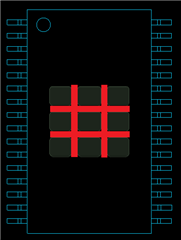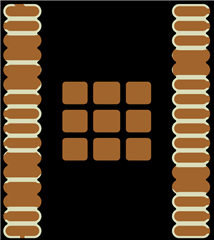Hi Folks
I have a question, what is better a hatching heat dissipation PAD or "square" complete PAD?
Texas Instruments always recommend a complete PAD for heat dissipation, but now we have these footprints with hatched PADs in our libraries,
but I don't know this will be affect the heat transfer to the PCB and increase the thermal resistance.


Thanks in advance.
Hector A.



